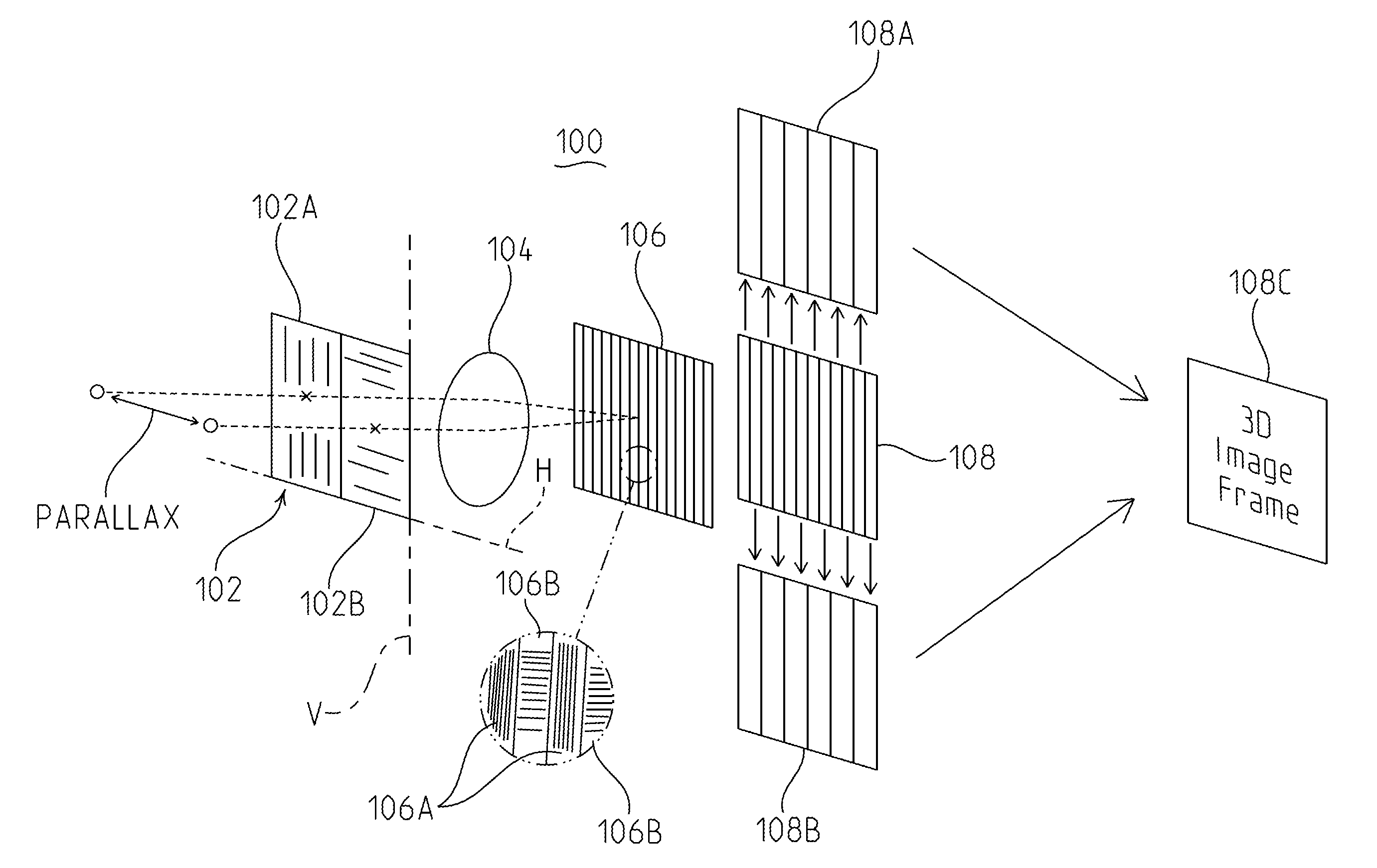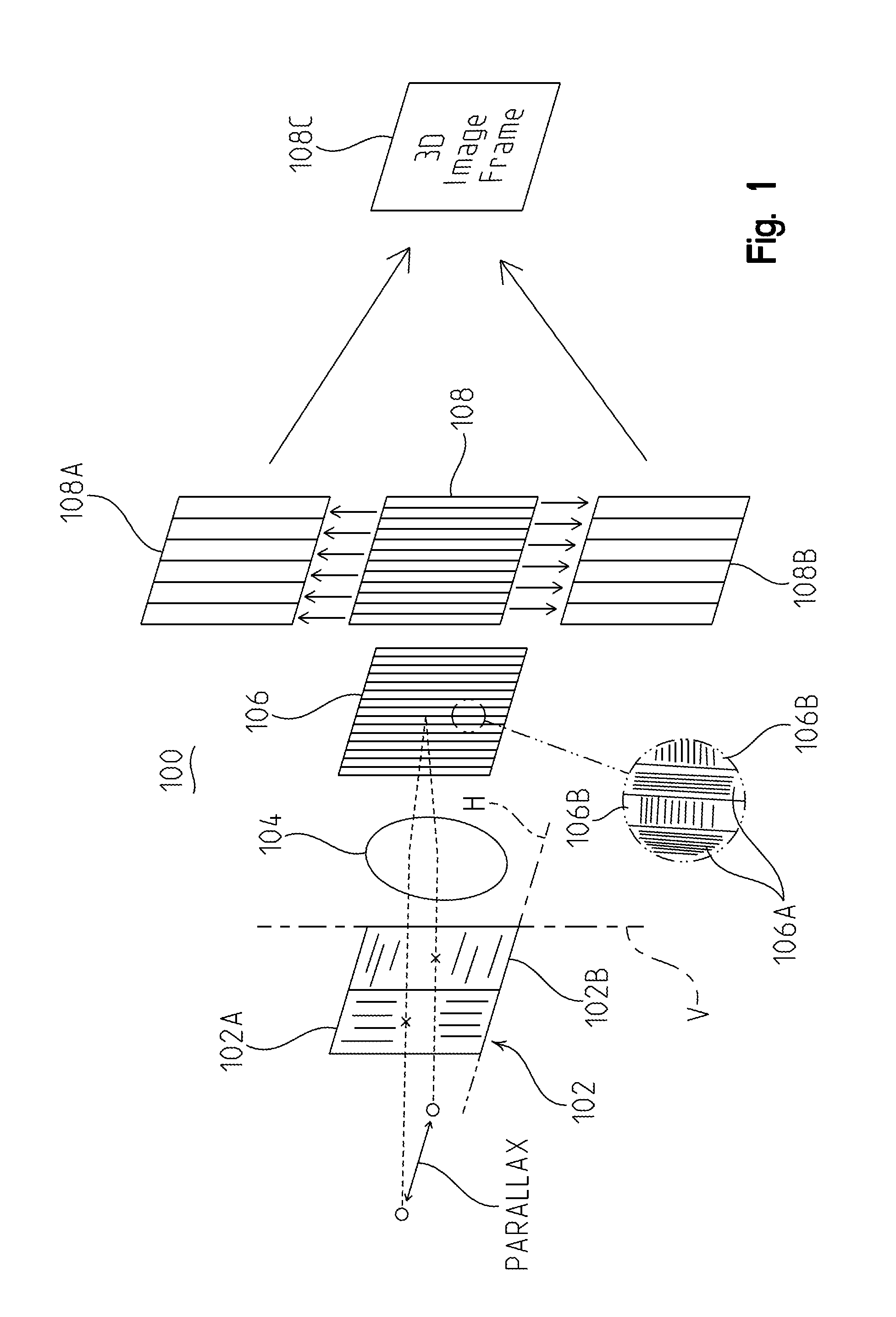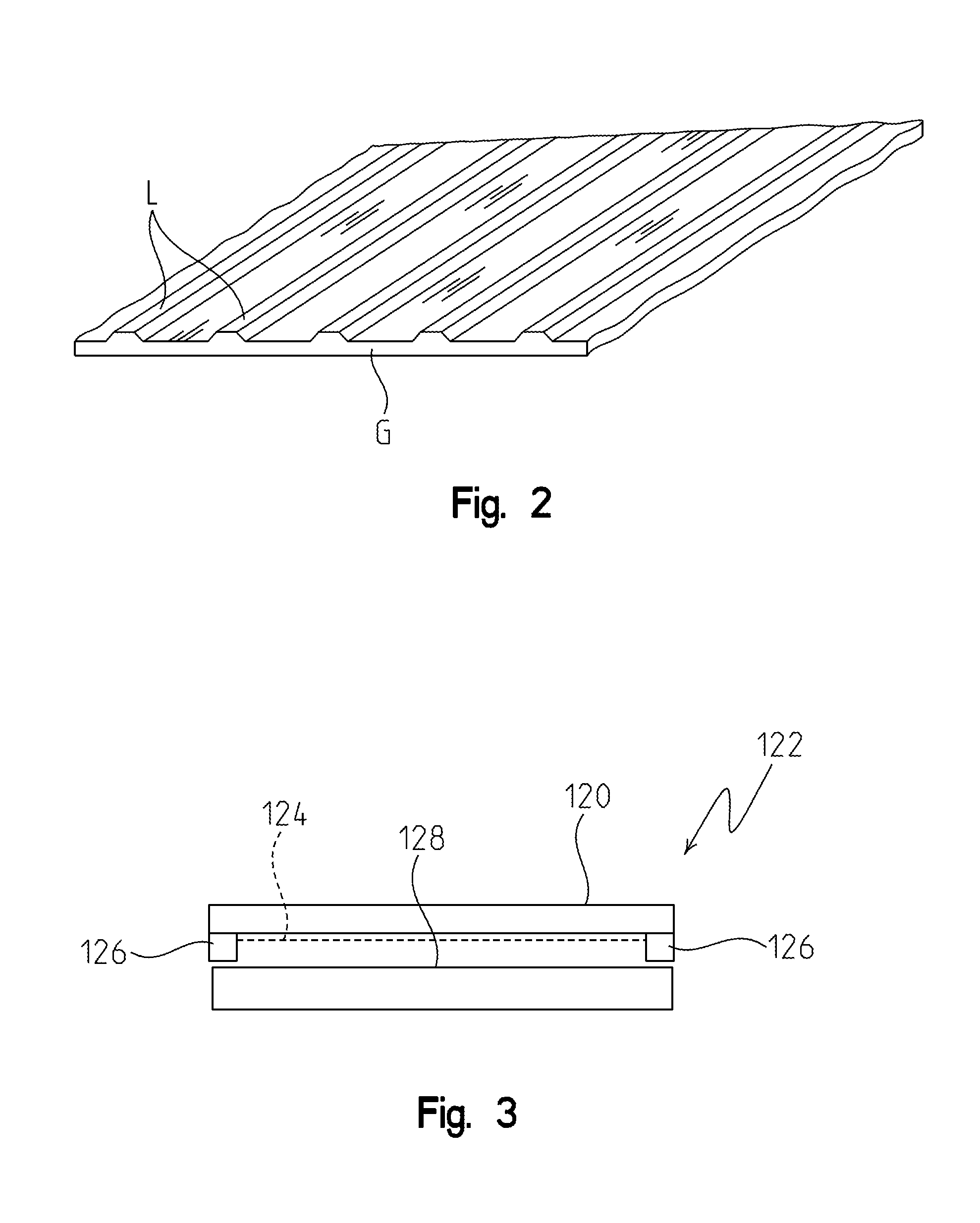Three-dimensional imaging system using a single lens system
a three-dimensional imaging and single lens technology, applied in the field of stereoscopic imaging, can solve the problems of stilted motion and unwanted video conten
- Summary
- Abstract
- Description
- Claims
- Application Information
AI Technical Summary
Benefits of technology
Problems solved by technology
Method used
Image
Examples
Embodiment Construction
[0017]In the imaging system of the present application, parallactic information is passively captured using a single electronic imaging device, such as a CCD or a CMOS array element, and a single lens system in combination with polarizing structures. More particularly, an input polarizer is placed in front of the lens system. Two input polarizers or a single polarizer divided into two different polarizing portions, each being about half of the single polarizer, can be used. Light entering a first polarizer or first side of a single polarizer, for example the left side, is polarized into a first axis, for example the vertical axis. Light entering a second polarizer or second side of a single polarizer, for example the right side, is polarized into a second axis, for example the horizontal axis.
[0018]Additional polarizing structure is placed between the single lens system and an imaging device. This third or interleaving polarizing structure is made up of sections of polarizers that h...
PUM
 Login to View More
Login to View More Abstract
Description
Claims
Application Information
 Login to View More
Login to View More - R&D
- Intellectual Property
- Life Sciences
- Materials
- Tech Scout
- Unparalleled Data Quality
- Higher Quality Content
- 60% Fewer Hallucinations
Browse by: Latest US Patents, China's latest patents, Technical Efficacy Thesaurus, Application Domain, Technology Topic, Popular Technical Reports.
© 2025 PatSnap. All rights reserved.Legal|Privacy policy|Modern Slavery Act Transparency Statement|Sitemap|About US| Contact US: help@patsnap.com



